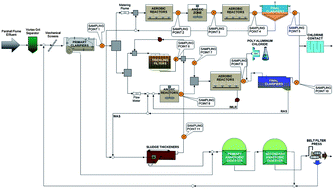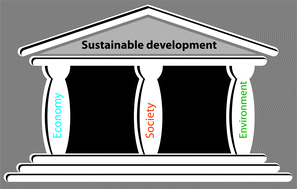 The first HOT paper this week comes from Yuefeng Xie and colleagues at The Pennsylvania State University. They investigated the effect that treatment at watewater treatment plants (WWTPs) had on disinfection by-product (DBP) precursors. Eight different WWTPs were studied, and an additional plant that carries out two biological treatment processes was also investigated as a comparative study. The level of DBP precursors was established in the wastewater of each WWTP, and this was then compared to the levels after the processing had occurred. Amongst other results, they found that WWTPs that removed the most organic matter and accomplished better nitrification resulted in lower disinfection by-product formation potentials in the effluent. They state the study can be used by water and wastewater professionals to ‘better control wastewater-derived DBPs in downstream potable water supplies’.
The first HOT paper this week comes from Yuefeng Xie and colleagues at The Pennsylvania State University. They investigated the effect that treatment at watewater treatment plants (WWTPs) had on disinfection by-product (DBP) precursors. Eight different WWTPs were studied, and an additional plant that carries out two biological treatment processes was also investigated as a comparative study. The level of DBP precursors was established in the wastewater of each WWTP, and this was then compared to the levels after the processing had occurred. Amongst other results, they found that WWTPs that removed the most organic matter and accomplished better nitrification resulted in lower disinfection by-product formation potentials in the effluent. They state the study can be used by water and wastewater professionals to ‘better control wastewater-derived DBPs in downstream potable water supplies’.
Disinfection by-product formation potentials in wastewater effluents and their reductions in a wastewater treatment plant
Hao L. Tang, Yen-Chih Chen, John M. Regan and Yuefeng F. Xie
DOI: 10.1039/C2EM00015F
 The second HOT paper comes from Tomei Gianfranco and co-workers at the University of Rome. They measured blood benzene and two urinary acid levels in traffic policemen, police drivers and roadmen. Benzene exposure was higher for urban workers than the general population and comparable in non-smoker traffic policemen and police drivers, and was increased in (non-smoker) urban workers when compared to rural workers. There was significant correlation in the levels of airborne benzene and blood benzene in non-smoker urban workers.
The second HOT paper comes from Tomei Gianfranco and co-workers at the University of Rome. They measured blood benzene and two urinary acid levels in traffic policemen, police drivers and roadmen. Benzene exposure was higher for urban workers than the general population and comparable in non-smoker traffic policemen and police drivers, and was increased in (non-smoker) urban workers when compared to rural workers. There was significant correlation in the levels of airborne benzene and blood benzene in non-smoker urban workers.
Environmental and biological monitoring of benzene in traffic policemen, police drivers and rural outdoor male workers
Ciarrocca Manuela, Tomei Francesco, Caciari Tiziana, Capozzella Assunta, Scimitto Lara, Nardone Nadia, Andreozzi Giorgia, Scala Barbara, Fiaschetti Maria, Cetica Carlotta, Di Giorgio Valeria, Schifano Maria Pia, Tomei Gianfranco and Sancini Angela
DOI: 10.1039/C2EM30120B
Both these papers are free to access for 4 weeks following a simple registration for individual users.

















